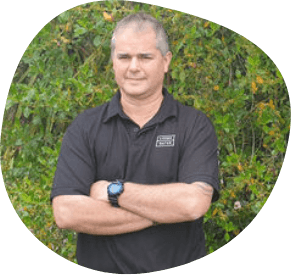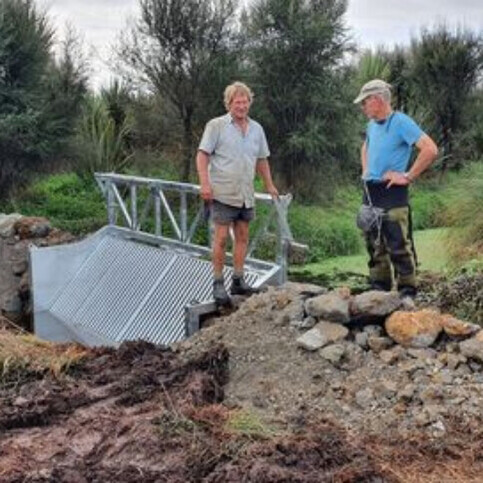Living Water installs pest fish barrier to "Stop the Spread"
MEDIA RELEASE
17 August 2022
Living Water recently installed a koi carp barrier at the outlet of Lake Ruatuna, Waikato Peat Lakes. This has been several years in the making: design, consultation, consenting and construction took some time and the water levels at the outlet and weather have to be suitable for installation.
“Currently, koi carp have not been detected in Lake Ruatuna, following extensive pest fish netting, boat electric fishing and eDNA investigations. Maintaining this koi free status is a priority for Living Water!” explains Dr Katie Collins, DOC Freshwater Science Lead who lead the eDNA research done in 2019 and 2020.
Koi carp (Cyprinus carpo) are native to Asia and Europe and look similar to goldfish. Their colouring is highly variable – gold, black, red, orange and pearly white and have whiskers at the corners of their mouth (they can grow as large as 10 kg and 75 cm long)! They are widespread in other parts of the Waikato, Auckland and Northland regions, and in isolated populations throughout the North Island. There are no known populations in the South Island.
It’s important we stop them from spreading further because of the harm they cause to our freshwater ecosystems. As there is limited ability to control koi carp, this barrier is a tool in a toolbox of various options that used together are most likely to be effective (more about options here). “They’re like possums of freshwater” she says “very hard to eradicate and highly destructive.”
Dion Patterson, DOC Waikato Peat Lakes Site Lead states “the design and functionality of this trap looks great but will require ongoing checks for blockages and potentially weed clearance. Maintenance will be scheduled as part of regular predator trapping lines DOC Rangers and volunteers do around the lake.” There were some reservations from a neighbouring landowner about the possibility of the barrier restricting flow at the outlet and as a consequence elevate lake levels and flood his lower-lying paddocks. “He was invited to view the structure shortly after installation and seemed very comfortable with barrier.” This highlights the tricky nature of finding the balance between biodiversity and food production.
Stuff interviewed Dr Katie Collins and Dion Patterson about the fish barrier and koi carp here.

DION PATTERSON
DOC Site Lead, Waikato Peat Lakes and Pūkorokoro-Miranda

KATIE COLLINS
DOC Freshwater Science Lead
What damage do they cause?
Koi carp feed like a vacuum cleaner, sucking up anything in their wake and blowing out anything they don’t eat - which isn’t much. They eat insects, fish eggs, small fish, plants and almost any other organic matter.
Their manic feeding stirs up the bottom of waterways, further degrading water quality
They thrive in already degraded water
A female koi can lay half a million eggs at a time
What do I do if I catch or see a koi carp?
Koi carp are an Unwanted Organism and a Noxious Fish and must be killed immediately if caught
If you spot a koi carp outside of the areas outlined above, call the DOC hotline, 0800 DOC HOT (0800 362 468)
How do I stop the spread of koi carp?
Check, clean and dry all gear that comes into contact with water when moving between waterways.
Source: www.livingwater.net.nz

